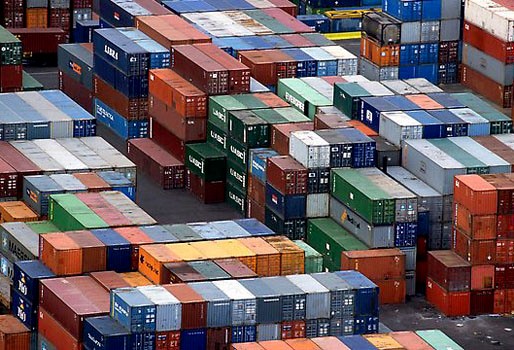This weekend articles have appeared in the Australian press about the worldwide shipping container shortage, which has been caused – at least in part – by a stockpile of boxes that has unintentionally accumulated in the USA.
The Australian import/export industry has been painfully aware of this situation for some time now. Logistics service providers have had to do more explaining to their clients over the past year than ever before about why empty containers may not be available when needed. Three months ago we wrote about the worsening situation in China – particularly at the port of Dalian.
Roughly 60% of global goods move by container. There are about 180 million containers worldwide, but they are not always in the right place at the right time. Â
The crisis began last year after the Covid-19 pandemic created movement restrictions and lockdowns affecting transportation, ports and labour forces, particularly in the US, where for every ten containers imported, only four were being exported. This has led to inflation in shipping and container prices, increased delays in the movement of goods and will soon impact the consumer with arbitrary price rises expected.
Over recent weeks, dozens of container ships have been held at anchor off the coast of California waiting for space at the ports of Los Angeles and Long Beach.The two ports together handle more than a third of U.S. container imports, and delays there are part of a global supply-chain mess that continues even after the ships are unloaded. In January, more than a quarter of imported containers at those gateways had to wait more than five days for handling once they reached the dock. In June 2020, before the logjam, only about 2% had to wait that long.
Last month the world’s largest shipping container line, Maersk, deployed its massive 347m/9,640 TEU vessel Soroe Maersk from Thailand to collect 3756 empty containers from Sydney and 4148 from Melbourne to ship them to Vietnam and China.
Supply chain disruption has led to people in Thailand unable to get maize on time from India. Malaysians and Indonesians are facing a shortage of onions and the Japanese are waiting for shrimp.
China, where the pandemic began, recovered before everyone else and their exports surged 21% in November 2020 from the previous year, as the country’s mammoth industrial engine restarted and cranked out mountains of appliances, toys, clothes, personal protective equipment and other items currently in high demand around the world. Ironically, this increased demand is attributed to Covid – people stuck at home are buying more goods.
But due to China’s lopsided trade balance which  is inversely proportionate to that of the USA – exporting three containers for every one imported – and delays in containers returning to China due to the pandemic overseas, a severe shortage is pinching export flows. China is also where most of the world’s new containers are produced. Container manufacturers there have expanded shifts and boosted capacity to try to keep up with demand, but are still falling short. China’s monthly output – which accounts for 96% of global production of boxes – hit a five-year high of 300,000 units in September.
All these disruptions show how vulnerable supply chains are, and why it has been so challenging for many businesses to rebound a year after the pandemic’s onset, even as the economy begins to recover.
As licensed Customs Brokers and International Freight Forwarders, Colless Young offers you professional service on all your cargo shipping and transport needs, export and import, including fumigation, warehousing and trucking. We are based in Brisbane and offer a complete range of logistics services, for both air and sea freight, through all Australian ports and airports.

